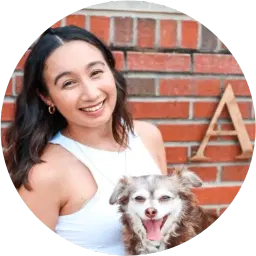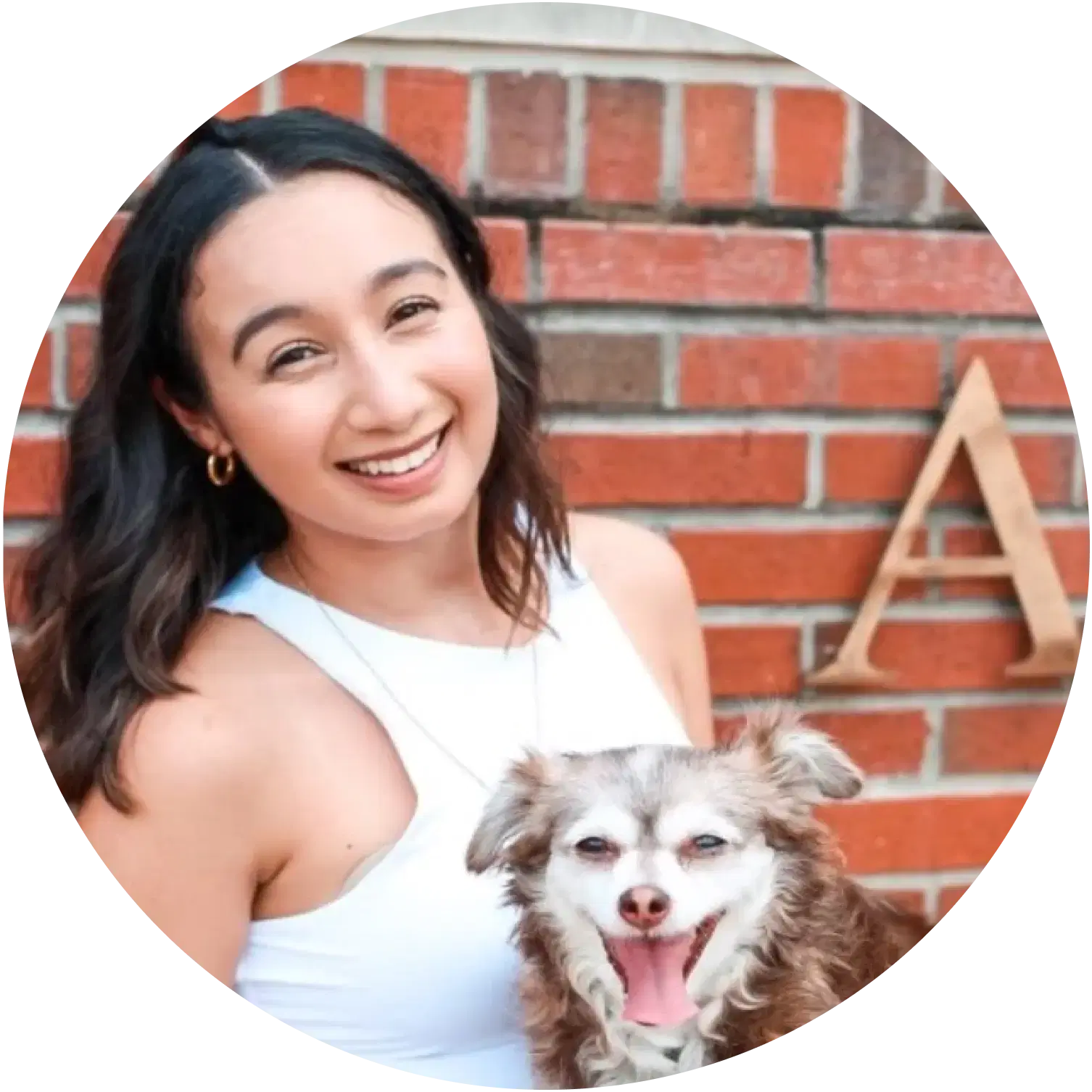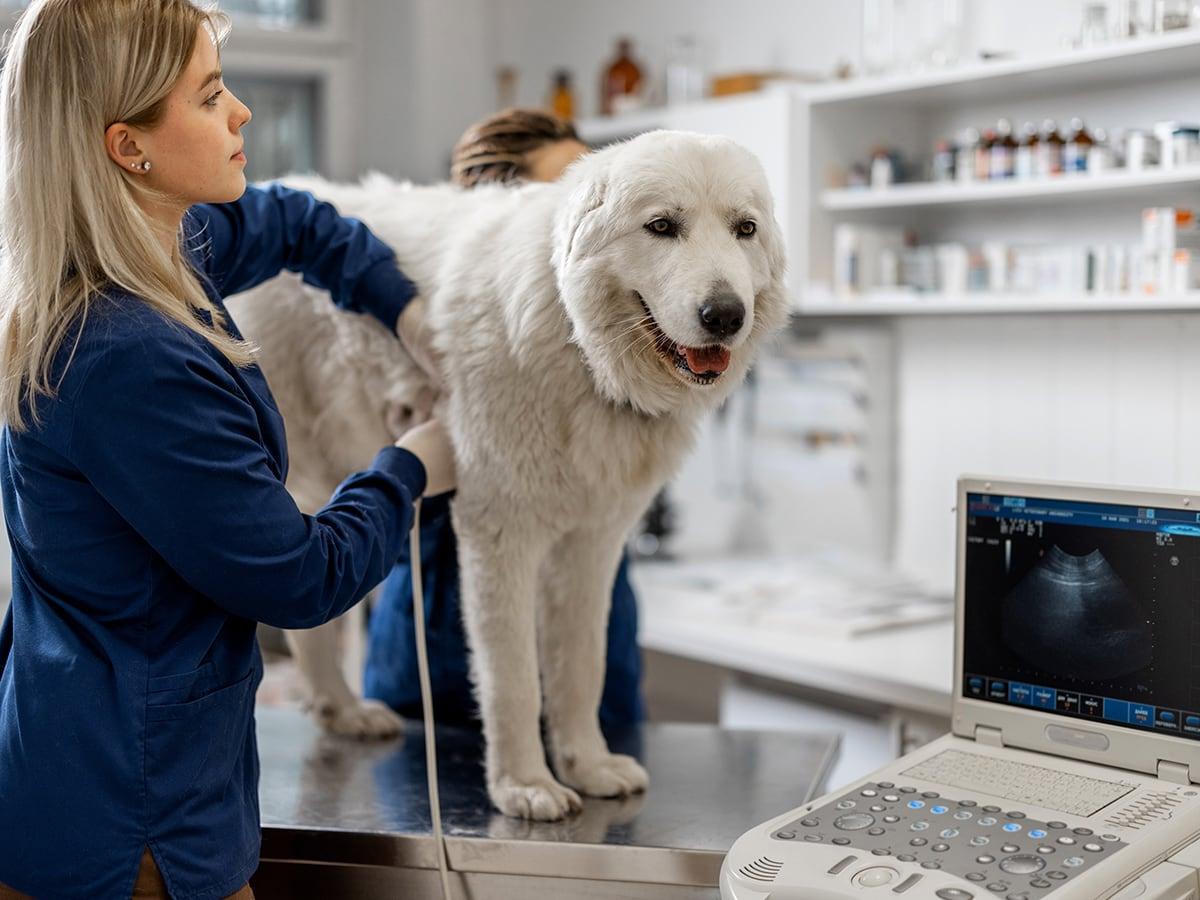Gastric dilatation-volvulus (GDV), commonly known as bloat, is a serious and potentially fatal condition that affects dogs. It occurs when the stomach fills with gas and fluid, causing it to distend (dilatation). In many cases, the distended stomach then rotates (volvulus), cutting off blood supply to vital organs. This requires immediate veterinary attention and surgery to correct.
While GDV can occur in any dog, it is most often seen in large, deep-chested breeds. According to some estimates, approximately 60,000 cases occur annually in the US alone3. Understanding the causes, symptoms, and treatment of GDV can help you take proactive steps to protect your canine companion.
What Causes Gastric Dilatation-Volvulus in Dogs?
While the exact cause of GDV remains unknown, several factors are believed to contribute to its development (AKC Canine Health Foundation; Gastric Dilatation-Volvulus). These include:
Breed: Large, deep-chested breeds like Great Danes, German Shepherds, and Standard Poodles are at a significantly higher risk. In fact, Great Danes are 5 to 8 times more likely to experience bloat than dogs with a low height to width ratio3.
Eating Habits: Rapid eating, consuming large meals, and drinking excessive amounts of water at once can increase the risk.
Activity After Eating: Strenuous exercise after meals can also contribute to GDV.
Stress and Anxiety: Dogs described as "hyper" or "fearful" may be more prone to GDV1.
Other Factors: Age, genetics, and underlying health conditions can also play a role.
Recognizing the Signs of GDV
GDV is a life-threatening emergency, and early recognition is crucial. Symptoms can progress rapidly, so it's important to be aware of the warning signs (AKC Canine Health Foundation; Gastric Dilatation-Volvulus):
Swollen Abdomen: This is often the most noticeable sign, particularly on the left side.
Restlessness and Pacing: The dog may appear anxious and uncomfortable.
Abdominal Pain: The dog may whine, groan, or be reluctant to move.
Non-Productive Retching: The dog may try to vomit but nothing comes up.
Excessive Drooling: Drooling may be profuse.
Weakness and Collapse: The dog may become weak, collapse, or be unable to stand.
Rapid Breathing: Breathing may be rapid and shallow.
Pale Gums: The gums may appear pale due to poor circulation.
If you notice any of these signs in your dog, seek immediate veterinary attention.
How is GDV Diagnosed and Treated?
Veterinarians typically diagnose GDV based on physical examination, medical history, and radiographs (x-rays) to confirm the stomach's position and rule out other conditions.
Treatment for GDV involves immediate stabilization of the dog's condition, followed by surgery (VCA Animal Hospital; Gastric Dilatation-Volvulus). Stabilization measures include:
Fluid Therapy: Intravenous fluids are administered to combat shock and dehydration.
Gastric Decompression: A tube is passed down the esophagus or a needle is inserted through the abdominal wall to release gas and decompress the stomach.
Medication: Medications may be given to manage pain, reduce nausea, and address any cardiac arrhythmias.
Once the dog is stable, surgery is performed to:
Realign the Stomach: The torsion is reversed, and stomach is returned to its normal position.
Assess for Damage: The stomach and spleen are examined for any compromised tissue.
Perform a Gastropexy: The stomach is sutured to the body wall to prevent future episodes of GDV. This procedure has a 95% success rate in preventing recurrence3.
Prognosis and Prevention
The prognosis for dogs with GDV depends on several factors, including the severity of the condition, the time elapsed before treatment, and the presence of complications. Sadly, even with prompt treatment, the mortality rate can range from 10 to 37% (VCA Animal Hospitals)2.
While GDV cannot be entirely prevented, certain measures can help reduce the risk (AKC Canine Health Foundation; Gastric Dilatation-Volvulus):
Feeding Management: Feed multiple small meals throughout the day instead of one large meal. Avoid elevated food bowls and discourage rapid eating.
Exercise: Restrict strenuous exercise for at least an hour after meals.
Stress Reduction: Create a calm and relaxed environment, especially during mealtimes.
Prophylactic Gastropexy: For high-risk breeds, consider a preventative gastropexy, ideally at the time of spay or neuter.
Answering Your Questions about GDV
What causes gastric dilatation-volvulus in dogs? While the exact cause is unknown, GDV is likely a complex interplay of factors. These include the dog's breed, eating habits, activity levels, and temperament. Large, deep-chested breeds are particularly susceptible, and eating large meals or exercising vigorously after eating can increase the risk.
How to tell if a dog has GDV? Look for a combination of symptoms, including a swollen abdomen, restlessness, attempts to vomit without success, excessive drooling, and signs of distress like panting or pale gums. If you suspect GDV, seek immediate veterinary care.
How do you treat gastric dilatation in dogs? Gastric dilatation, or bloat, is the first stage of GDV. If caught early, before the stomach twists, treatment may involve decompression and supportive care. However, if the stomach has already rotated (volvulus), emergency surgery is necessary to untwist it and prevent life-threatening complications.
By understanding GDV and taking preventative measures, you can help reduce your dog's risk and be prepared to act quickly should this serious condition arise.

With 10 years of experience as a pet parent, I aim to empower pet owners with insights into pet insurance and maintaining their pet's well-being. I aspire to be a trusted source, combining knowledge with a commitment to the welfare of our beloved pets.

Dr. Jennifer Sperry, a licensed vet and Medical Director at Independence Pet Group, is dedicated to educating pet parents about the importance of pet health and financial preparedness, bringing pet health information to a broad audience. You can learn more about Dr. Sperry on her LinkedIn.
AKC Canine Health Foundation. (n.d.). In Understanding Gastric Dilatation-Volvulus or “Bloat.” Retrieved October 1, 2024, from https://www.akcchf.org/canine-health/top-health-concerns/bloat/understanding-bloat.html
Bloat: Gastric Dilatation and Volvulus in Dogs. (n.d.). In VCA Animal Hospitals. Retrieved October 1, 2024, from https://vcahospitals.com/know-your-pet/bloat-gastric-dilatation-and-volvulus-in-dogs
Gastric Dilatation-Volvulus (Bloat). (n.d.). In Veterinary Medical Center of Central New York. Retrieved October 1, 2024, from https://vmccny.com/gastric-dilatationvolvulus-bloat/
Gastric Dilation and Volvulus in Small Animals - Gastric Dilation and Volvulus in Small Animals. (n.d.). In Merck Veterinary Manual. Retrieved October 1, 2024, from https://www.merckvetmanual.com/digestive-system/diseases-of-the-stomach-and-intestines-in-small-animals/gastric-dilation-and-volvulus-in-small-animals#Treatment_v3266461
Lhuillery, E., Velay, L., Libermann, S., Boedec, K., Gautherot, A., Bonneau, L., … & Etchepareborde, S. (2022). Outcomes of dogs undergoing surgery for gastric dilatation volvulus after rapid versus prolonged medical stabilization. Veterinary Surgery, 51(5), 843-852. https://doi.org/10.1111/vsu.13763
Sharp, C., Rozanski, E., Finn, E., & Borrego, E. (2020). The pattern of mortality in dogs with gastric dilatation and volvulus. Journal of Veterinary Emergency and Critical Care, 30(2), 232-238. https://doi.org/10.1111/vec.12932












